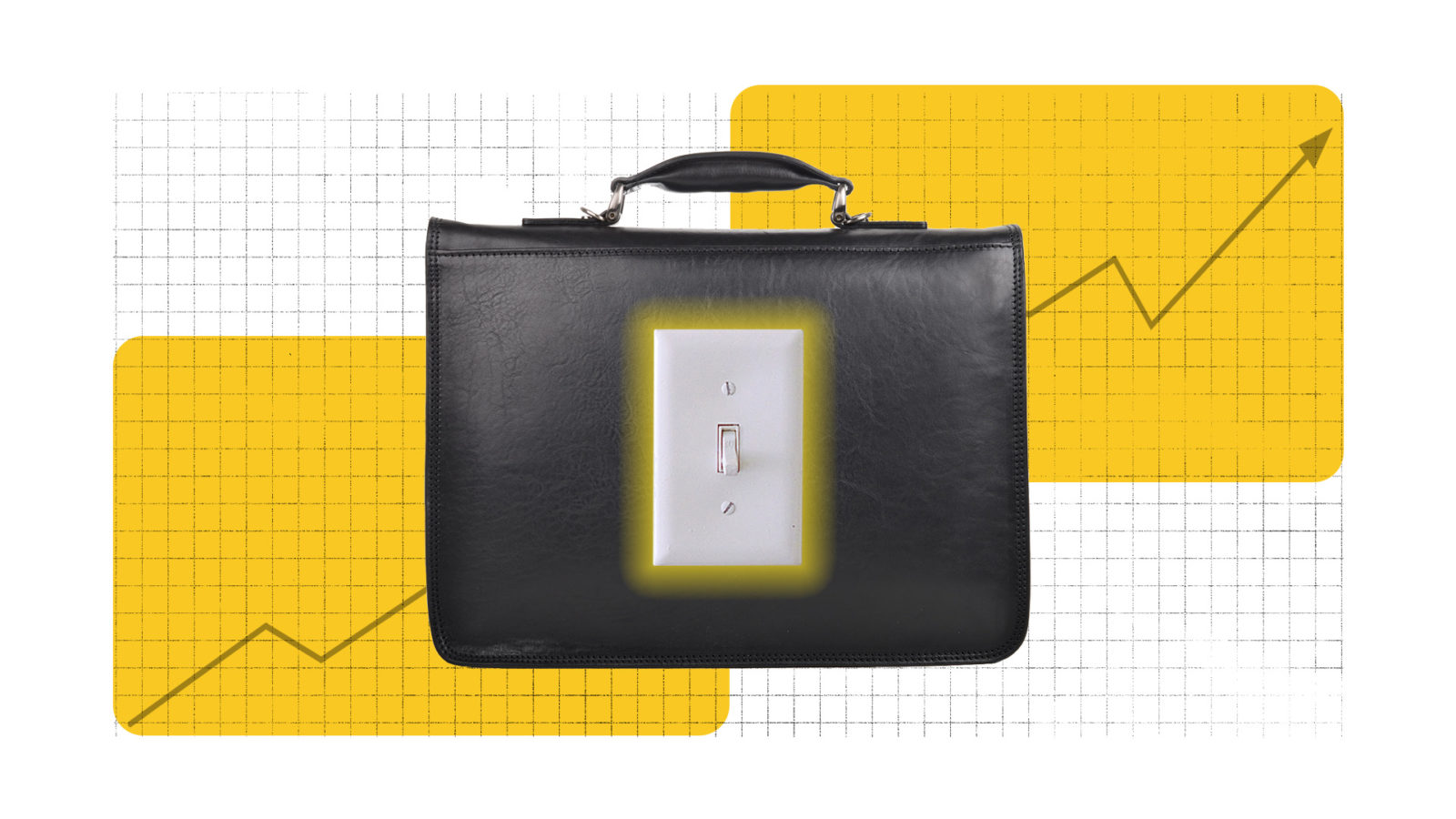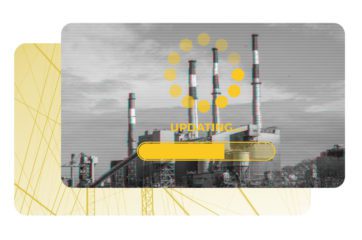Climate XChange’s Dashboard Digest is a deep dive on each of the policies that we track in the State Climate Policy Dashboard and an exploration of how these policies can interact with one another to form a robust policy landscape. The series is intended to serve as a resource to state policy actors who are seeking to increase their understanding of climate policies, learn from experts in each policy area, and view examples of states that have passed model policies. We’re continuing our series with policies on utilities and the grid.
In many ways, the electric grid system in the U.S. works exactly like it was designed to, and that’s a good thing. Think about it: for many parts of the country, lights turn on when you flip the switch.
This tenet of the electricity system is known as reliability, and it has always been a major priority for grid operators. More than anything, power producers were held responsible for ensuring that once they came online, outages would be rare and fixed quickly. In a world that’s becoming increasingly electrified, grid reliability is indeed important, but our society has a new priority to add to the equation: the climate crisis.
Electric utilities, especially for-profit investor-owned utilities (IOUs), have been powerful voices in their industry since its inception — and they’ll likely continue to be, for better or worse. These utilities, along with investors, regulators, and the public have shaped the current electric grid, which means that they also have the power to modernize it.
For this article, we spoke with Joshua Basseches, PhD, Assistant Professor of Public Policy & Environmental Studies at Tulane University. Dr. Basseches says that unless something in our electricity system gives, there’s no way to meet our climate targets: “The way that we’ve done things historically is not conducive to the types of changes we’re going to need if we’re going to have a renewable energy transition and electrify everything.”
This article is part of our Dashboard Digest series, which dives deeper into the state-level climate policies tracked on our State Climate Policy Dashboard. In this Policy Primer we’ll explore how our energy system was designed, how it’s working (but not in the ways we need it to), and what we should expect out of a modern electricity grid.
Read more: Rural Electrification on Tribal Lands
A (Somewhat) Brief History of Utilities
Early Power Production
Most people have heard of Thomas Edison, the American scientist credited with patenting the incandescent light bulb, among many other things. The success of Edison’s inexpensive and long lasting light bulb helped spur the introduction of electricity into homes. Scientists like Thomas Edison may have been instrumental in the early development of electricity in America, but energy isn’t free. The current grid system came to be thanks to the businesspeople who sold it to the masses. One of those people was an Englishman named Samuel Insull.
Insull was born in London in 1859 and later moved to the U.S. to work as a secretary for Thomas Edison, a man he idolized. Insull moved up in the ranks and Edison soon sent him to run one of the company’s power facilities in Schenectady, New York, telling him simply, “Do it big, Sammy… Make it go.”
Eventually in 1892, Insull moved to Chicago to be president of the Chicago Edison Company, one of 20 power stations that served 5,000 total customers. At the time, running a power company was a risky business venture because there was no way to store energy. Electricity needed to be used at the same time that it was produced, and it was a luxury that only the wealthy could afford — mostly at night when demand was high. Despite the risks, Insull saw potential in the industry, doubled down buying out all of his competitors, and then built the largest power plant in the world: Harrison Street Station.
This was a huge business, now with huge expenses, and Insull needed to increase revenue. He decided to sell electricity not only to the wealthy, but to anyone who wanted it. To do this, Insull’s power facilities sold electricity at different prices based on the time of day, with higher rates at night and cheaper power during the day. He sought out new customers who could use electricity at times other than busier evening hours, like small businesses. This both expanded his customer base and the range of his company’s service area. Insull not only increased the company’s revenue, but also decreased its expenses. He was so successful that by the end of the 1920s, his electric utilities served over four million customers in 32 states.
Insull may have been responsible for expanding access to affordable electricity to millions of Americans, but like many utilities, his legacy is also steeped in scandal. To pay for his company’s many investments, Insull sold low-price bonds to millions of Americans who looked at them as a safe option — later to find out that they’d become worthless during the Great Depression. Insull’s shocking downfall meant that he became remembered more for stealing people’s money than for bringing electricity into their homes. The result of Insull’s legacy was a growing skepticism that companies like his should go unchecked.
Insull was a member of an emerging group of wealthy, powerful businessmen: electric utility magnates. Their businesses were growing in cities around the country, building infrastructure, buying out competitors, and holding exclusive contracts for providing power. IOUs became “natural monopolies,” companies without competition due to significant barriers to entry in the industry. For better or worse, these major monopolies built out the country’s power grid, and they indeed “did it big.”
Read more: In Enron’s Fall, an Echo Of the 1930s
Regulating Electric Monopolies
The word “monopoly” often stirs up negative images of large companies with high prices, sub-par services, and lack of innovation. In fact, many monopolistic business practices became illegal in the U.S. after the passing of several antitrust laws in the late 19th and early 20th centuries. So why were electric utilities able to become, and in some cases continue to operate, as monopolies?
At the time, open competition in the electricity industry was impractical. Operating a power company was an extremely expensive and infrastructure-intensive investment. Because of this, it made more sense for one area to have a single provider that could take on all parts of the market: power generation, transmission, distribution, and customer service.
The desire for cheap and accessible electricity was growing by the day, so to balance the demand for power and creation of monopolies, it was evident that regulation was necessary. Regulatory bodies at the state and federal levels were created to ensure that electric utilities had to provide power to anyone in their service area at the lowest possible cost, while still able to profit and pay back investors. Theoretically, the resulting business would have the economic efficiency of a private enterprise, with the benefits of a public service. Regulators made it clear that utilities were responsible for providing electricity as reliably as possible, and according to Dr. Basseches, they became quite good at it. “If there’s only one company that’s in charge of everything, chances are they’re going to make sure the system works.”
State-level regulatory bodies go by different names, but most are known as Public Utilities Commissions (PUCs). PUCs are in place to keep IOUs in check and ensure that services are reliable and fair to the public. Every state has one, and in many cases they regulate water, gas, and telecommunications in addition to electricity. Depending on the state, commissioners can be elected, or appointed by the legislature or the governor.
Not all utilities are investor-owned, some are public entities that serve municipal and rural communities. Municipal utilities, also known as munis, are operated by a city or county government. Cities were naturally the first parts of the U.S. to develop electric infrastructure, with many rural communities lagging behind. In theory IOUs could have run transmission lines far away from cities, but it was extremely expensive and fewer potential customers meant a lower return-on-investment. In 1936, FDR signed the Rural Electrification Act, which gave loans and financial aid to people living in rural areas to establish non-profit rural electric cooperatives, also called co-ops. The co-op system was successful, and thanks to this law, almost 80 percent of U.S. farms had electricity by 1950.
At the time the Rural Electrification Act was signed, only ten percent of farms had electricity.
Deregulation and Restructuring
Whether a utility was investor-owned, municipal, or a cooperative, the country experienced rapid electrification in just a few decades. However, despite how effective these utilities were, like most monopolies they started to lose the public’s trust and eventually cracks formed in the grid’s foundation.
Electricity prices normally fluctuate due to a variety of market forces, but they rose rapidly in the 1970s following petroleum supply shortages in the Middle East. This trend convinced utilities and regulators that remaining reliant on foreign petroleum was unwise, and domestic options like coal and nuclear may have more long-term stability. And as the population was growing, so was the demand for electricity. To keep up, utilities increased rates and by the 1990s, many states were ready for a change.
In 1996, California became the first state to restructure, or deregulate, its electricity market, by separating the ownership of power plants and the distribution system. Most often, this takes power generation assets away from utilities and introduces competition into that part of the industry. The goal was that a more competitive market would promote innovation and reduce costs to ratepayers. In restructured states, Independent Service Operators (ISOs) regulate the wholesale market for electricity generation. The PUCs in these states typically only regulate the actual retail distribution of power to a utility’s customers. Not every state took this approach; today 17 states have restructured electricity markets.
The Power Plant and Industrial Fuel Use Act of 1978 (later repealed in 1987) restricted utility power plants from using natural gas for electricity generation.
Around the same time that states were restructuring, policymakers began to incentivize renewables. Utilities in these states purchase electricity from Independent Power Producers, and will often make the most cost effective choice, which increasingly is becoming renewable energy. In some restructured states, utilities have even been known to support Renewable Portfolio Standards. Dr. Basseches says that these utilities aren’t necessarily favorable towards renewable generation, they often just don’t care where their energy comes from. “They’re not legally allowed to own that stuff [generation facilities] themselves. They only own the wires and the transmission stations that bring it to the end user.”
At the time this was mostly wind power, which was more affordable than solar and had been used at a utility scale for decades.
So What’s the Big Deal?
If the U.S. electric grid is reliable, many states are restructured, and regulators are in place to keep utilities in check, why does it matter if so many are investor-owned? When utilities are most concerned with profit, and regulators are most concerned with reliability, the resulting system can forgo other societal priorities such as the climate crisis.
Profits Over Progress
One driver of this problem is the utility’s profit model. Typical companies make a profit by selling as much product as possible at the highest cost possible. Regulated IOUs, on the other hand, are not allowed to charge whatever they want for electricity. Instead, utility profits come from building electricity infrastructure. In what’s called a rate case, the state’s PUC determines what investments, such as power lines, energy storage, or a power plant, are necessary to meet anticipated energy demand. Then the PUC determines how much money the utility will need to recoup the cost of building the infrastructure and earn a reasonable profit. This total revenue requirement is then divided up amongst the utility’s customers on their utility bills, at a rate approved by the PUC.
Some critics claim that this process can incentivize utilities to make unnecessary investments or fail to minimize expenses. Utilities earn a profit based on the value of their assets, which means it can be more valuable to build new power lines than to repair current ones. While maintaining infrastructure may be more considerate to ratepayers (and environmentally friendly), IOUs often act in their own best interests, which means building new infrastructure that demands as much capital investment as possible.
Thus, the stance of utilities on climate policy depends on whether it affects their bottom line. For example, utilities are historically opposed to distributed energy — the more energy a customer generates on their own, the less they need the utility to provide service and new infrastructure investments. Dr. Basseches put it succinctly, “The more people own their own electricity and generate their own electricity, the harder it is to justify building new utility scale generation.”
Political Lobbying From Utilities
While IOUs may be regulated at the state, regional, and federal levels, they still have a tremendous influence on the country’s political systems. A report from the Energy and Policy Institute found that in 2018, the country’s largest utilities donated millions of dollars to a variety of political organizations, mostly directed towards Republican candidates. One IOU, Florida Power and Light, even made the case to regulators that their own ratepayers should pay to let them recoup $9.5 million spent on lobbying, and the regulators agreed.
This makes the case even clearer that regulatory bodies need to be governed with the public’s best interest in mind. Unfortunately, the electric utility lobby is strong and because of the technical nature of the subject matter, they’re often the most knowledgeable people in the room. Decision-making committees and meetings should have representation from different stakeholders including utilities, ratepayers, and environmental justice groups. Even then, Dr. Basseches says that representation alone is not enough, and that a high level of understanding is just as important. “It’s one thing to have everyone in the room. But it’s a problem when half the people in the room don’t even understand what’s being discussed.”
How Utilities Can Be Climate Allies
While IOUs can pose a threat to climate policy, it’s not clear that they always do, or will in the future. As it stands right now, however, utility support of climate policies is lagging. A report from Influence Map found that only four out of the 25 largest IOUs engage positively with climate policy, and 11 of them actively obstruct it. Based on their research, there are 14 states in which climate legislation would face “high levels of resistance” because of political power from the state’s largest utilities.
Changing the governance model of utilities has the potential to change the profit-oriented motivations of IOUs. One option for this would be to transition utilities to public ownership. This removes the lobbying influence of a utility as well as their obligation to their shareholders. Even if it’s possible, this solution would also be extremely difficult politically. That’s a problem when faced with a climate crisis that needs to be addressed immediately, not in five to ten years.
Another approach is to accept that IOUs will be profit-motivated, and instead to shift the way that they make money. Currently, utilities are incentivized to build more infrastructure and sell more electricity. Unfortunately, to decarbonize the electricity sector, we’ll need to do less of both of those activities. States need policies that ensure that IOUs can still make money while helping to decarbonize the energy system. And as Dr. Basseches said, “To the degree that they can decarbonize in a way that’s profitable for themselves, they will be supportive.”
What We’re Covering Next
In our upcoming articles, we’ll examine five policies that impact utilities and a state’s electric grid. Each article will explore the policy in-depth and take a look at examples of its implementation. The policies for this category include:
Clean Energy Plan
Clean Energy Plans are developed to propose how a state will meet their clean energy objectives. These plans typically contain technical pathways, models, and recommendations for the state to ensure they achieve their climate goals.
Grid Modernization Plan
A state’s grid modernization plan will outline the strategies and steps that state will take to make sure its energy grid is resilient and prepared for the future. This plan can encompass technological advancements, grid management, and utility regulation.
Interconnection Standards
Interconnection standards apply to both customer-sited and utility-scale generation systems and standardize the way they connect to the power grid. The goal is that the process is easy, affordable, and clear to all parties who need to connect.
New Utility Business Model Proceeding
This policy has to do with changing the ways that utilities make money — from a centralized, infrastructure and demand-based model, to other options that have performance and outcome-based incentives.
Utility Green Power Option
A green power option allows utility customers to voluntarily purchase renewable energy from their utility. In some areas, this comes at an additional cost to the consumer, while in others it’s more affordable.






